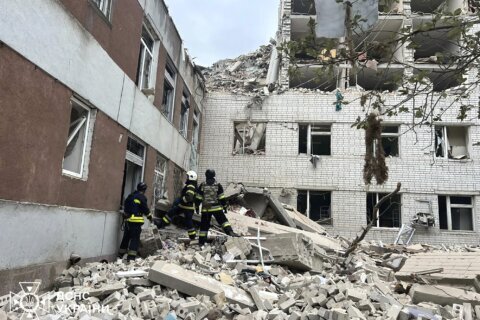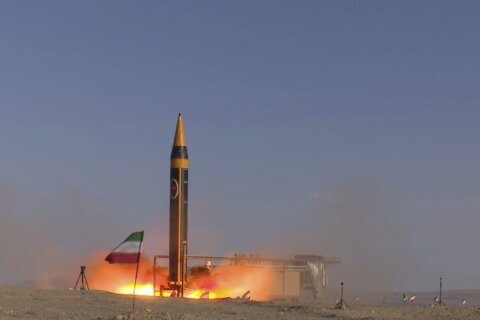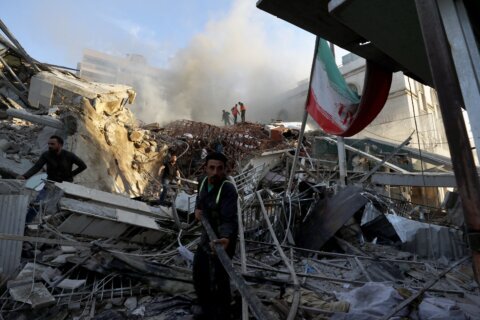WTOP’s J.J. Green recently was granted an exclusive look at the Defense Intelligence Agency’s situation center. In this three-part series, he talks with DIA Director Michael T. Flynn about the agency’s global monitoring capabilities, the threats facing the United States and the future of intelligence efforts.
WASHINGTON – The Defense Intelligence Agency’s (DIA) ability to survey the world from its top-secret operations center faces a huge challenge when confronting a new phenomenon that’s not yet fully understood.
It’s the accelerating speed of global change.
Aside from the impossible challenge of trying to be everywhere at once, U.S. intelligence agencies are concerned about the swift manner in which new threats can emerge.
U.S. intelligence officials say geopolitical upheaval has become much more frequent than in past years and an escalating number of disputes between countries over land and water can bring nations to the brink of armed conflict almost overnight.
Lt. Gen. Michael Flynn, director of the DIA, has taken note of the dangerous speed of global alterations.
“There’s something called Moore’s Law,” he says during an exclusive interview with WTOP in his office. “It was conceived back around the mid-90s to late-90s and it talked about the pace of technologic change taking place every 18 months.”
“I don’t know what the new law is, but Moore’s Law is outdated,” he adds ardently. “Technologic change is occurring from what I see and from what we are experiencing at a much, much faster rate of speed.”
Weapons of mass destruction now pose threats to larger portions of the world because of technological improvements in weapons delivery systems. In fact, Flynn and other U.S intelligence leaders say the speed at which the world and technology move is among the greatest threats the U.S. has ever faced.
Several intelligence officials who’ve spoken to WTOP in the last two years concur, agreeing that technology also makes militant groups equally as dangerous as some nation-states.
The attack on the U.S. Consulate in Benghazi that killed U.S. Ambassador Chris Stevens and three other U.S. government workers was an example of the speed at which an event with potential deadly consequences can develop. U.S. officials say within hours of what was perceived to be a protest outside the consulate, the ambassador and some of his staff were dead.
What happened in Benghazi “was a tactical surprise,” Flynn says.
“Again this is hindsight, but it’s a dangerous world, it’s a dangerous neighborhood, there’s a lot going on,” Flynn says. “I think that as I look at it now, I’m not sure that more could have been done.”
He did not elaborate further on the attack.
Terror organizations and militants like those involved in the Benghazi attacks are said to be finding new ways to more effectively launch attacks. Some now use social media technology to communicate with each other. They also appear to use it to further the goal of terrorism: instilling fear.
Flynn’s concern is that someday, they could use other developing technology to execute their threats.
After the interview, Flynn granted WTOP a surprise and unprecedented tour of the DIA’s secret global operations center.
Among the places the agency keeps a close eye on is Africa. Two areas in particular — North and East Africa — consume much of the agency’s time.
“The challenges that we face, the threats that are potentially (in Africa), in most cases, are really these non-state threats, these militia groups, the convergence of militias, terrorist organizations like al-Qaida,” Flynn says.
Libya was the target of a U.S. government raid in early October to capture a wanted al-Qaida operative living openly in Tripoli. Another raid in Somalia the same weekend failed to capture a top al-Shabab leader but left a Navy SEALs calling card.
It’s believed DIA intelligence supported both of these operations.
The scope of the challenge for U.S. national security officials in Africa, which is home to several al-Qaida franchise groups, is the continent’s size.
“The length of the East Coast of the United States of America is only the length of the coastline of Somalia,” says Flynn.
Other worrisome issues and areas include the growing number and intensity of cyberattacks against the U.S., nuclear threats in Iran and North Korea and the civil war in Syria.
“I’ve been in the intelligence business for 32 years now and have worked at every single level and have been deployed multiple times,” Flynn says. “I would say that this environment that we’re in today is by far and historically among the most complex environments that we have ever been in.”
Complicating that environment is China. The U.S. government has publicly reported China’s engagement in high-level economic espionage against U.S. companies and the government.
To some experts, China’s rapid military buildup and espionage efforts against the U.S., along with the fact that NSA leaker Edward Snowden was granted temporary refuge in Hong Kong, establish the country as a U.S. enemy.
Others say that China’s ownership of more than a trillion dollars in U.S. debt links the two economies very closely, making an adversarial relationship between the countries a non-starter for both.
Considering China’s rapid growth and position on the world stage — and its close relationship with the U.S. — Flynn says, “We should not view China as an adversary.”
As the pace of change drives competition, threats and potential conflicts, Flynn believes the DIA has the resources to keep the U.S. ahead of it all.
“We have people in 142 countries around the world, 262 locations around the world, speaking multiple languages, doing multiple things,” he says. “They do it very quietly and they’re not looking for any credit.”
Related Stories:
- Part 1: Watching the world with the Defense Intelligence Agency
- Part 2: A peek at the DIA’s eye on the world
Follow @JJGreenWTOP and WTOP on Twitter.







